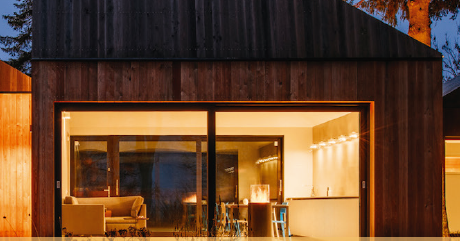THE FIRST I-HOUSES
Mobile homes have become very popular since the beginning of 2010s. Clayton Homes is one of the first and largest manufactured home companies. From its bamboo floors to its rooftop deck, their new industrial-chic “i-house” is very different than traditional homes. Architects at the country’s largest manufactured home company use the basic rectangular form with a v-shaped roofline to make energy efficiency and luxury homes. They look like the homes in architectural magazines.
The company’s president says that “i-house” is more than just a house. He also says that they are all fans of Apple and all that they have done. But the ‘I’ in their name stands for innovation, inspiration, intelligence and integration. “This innovative ‘green’ home, with solar panels and many other energy-saving products, is truly a home of the future,” said one of the partners of the company. “Costs for electricity and heating will be only about $1 per day.” They even have toilets that reduce water waste when flushing. The “i-house’s” metal v-shaped roof combines design with function. The roof works as a rainwater catchment system for recycling. It supports solar panels and gives a feeling of openness. Buyers can also customise the home’s layout online. They can add extra rooms or rearrange the shape of the house. The final product will come in different exterior colors depending on the buyer’s choice. It is like a kit of parts. It has many different parts that can go together in many different ways. More people these days prefer not to have a new house built in traditional methods. They prefer smart houses. They can see a prototype of the i-house they want to buy and make changes if they want. They are mostly preferred by people who are interested in green construction and the environment in their own personal lives. “I think it is smart. It is fresh. It is especially for a new generation of green-thinking homebuyers,” said Stacey Epperson, president of Frontier Housing. “You know a lot of people don’t see themselves living in traditional housing, but a lot of those people would see themselves living in an ‘i-house.’ I could live in an ‘i-house,’” she said.

